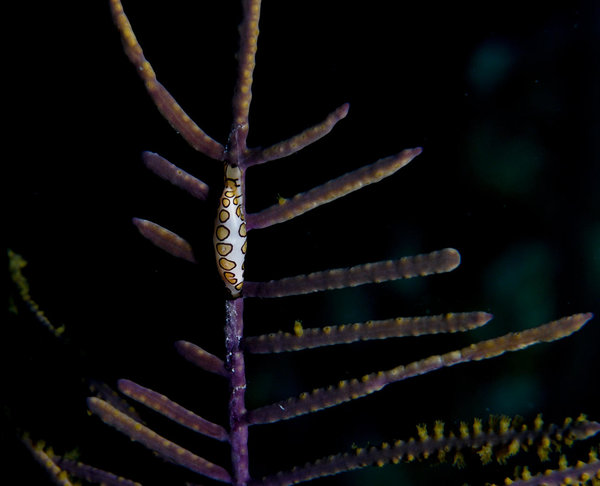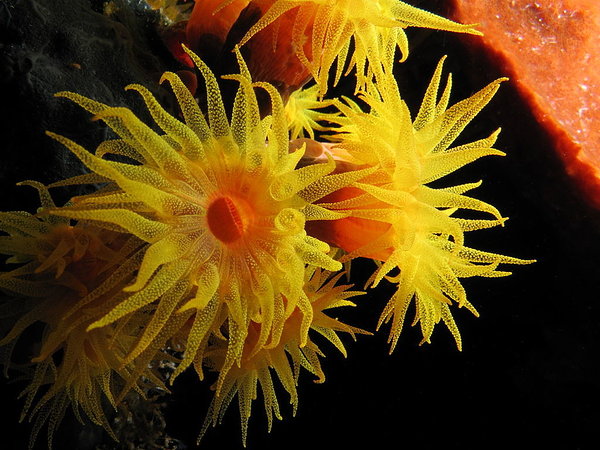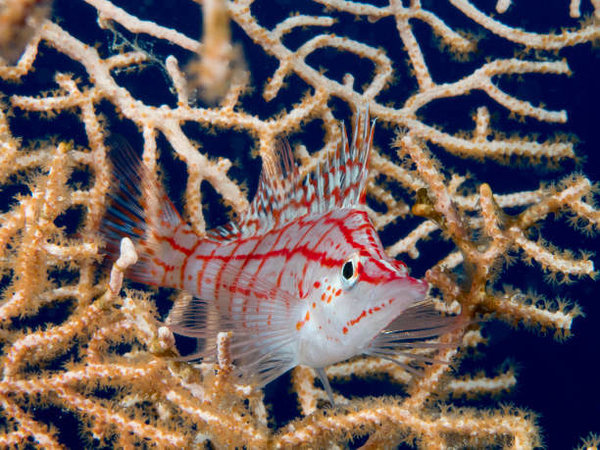What is coral?
Last week I talked about biodegradable sunscreen and the effect that it has on coral, but what exactly is coral.
When you are snorkeling or diving you may see what looks like a field of flowers or a garden of stones lying in front of you. Sometimes they look hard and immobile - like stalagmites in a cave, other times they look like petals swaying in the breeze. We are often told that there are many different types of coral to be seen at a particular site so lets discover what exactly coral is.
Despite looking like an inanimate object or a plant, coral is actually an animal. There are 2 main types of coral that we talk about - hard or stony corals and soft corals. Hard coral look like rocks because they have a hard calcium carbonate skeleton. It is also only fair that they remind us of plants because they survive by relying on a symbiotic relationship with the zooxanthellae algae that is stored inside their cells.
What is their symbiotic relationship like? Well the coral polyp (the individual within the coral colony) shelters the algae inside its cells it is also able to provide it with nutrients. As the algae photosynthesizes inside the coral it produces food. The coral is able to use this for nutrition aswell as foraging for its own. The algae fixes carbon dioxide, soaks up waste nitrogen and phosphorus and passes it directly to the coral host. The coral then breaks down these compounds and passes back products to the symbiont. It is a relationship where both sides benefit.
Coral reefs are classified as benthic ecosystems as they are sessile creatures which attach to a surface and do not move. Many corals are reef builders due to the build up of calcium carbonate skeletons creating the reef. There are different types of corals but they all fall under the phylum Cnidaria - the same as jellyfish (they share some similar characteristics such as stinging cells). They are relatively simple creatures in that they only have two tissues 1) gastrodermis - this lines the gastrovascular cavity and 2) ectodermis - this covers the external surface of the polyp. Most corals fall within the Anthazoas but some of them are in the hydrozoa class.
Coral polyps have only one single opening that acts as both a mouth and an anus. When polyps feed they extend tentacles out (the part that looks like flower petals) and they use these to capture nutrients in the water. These nutrients are taken in through their mouth and later expelled through the same opening.
So what is the difference between hard and soft coral? They look very different one looks like rocks, one looks like flowers!
Different forms of coral reefs exist across the planet, assemblages occur in the deep ocean and in shallow, sunlit waters. Carbonate coral reefs are ones where significant amounts of calcium carbonate have built up over tie. Non carbonate reefs are where corals still precipitate calcium carbonate but not at a rate which can keep up with the erosion and loss of carbonate due to storms and biological agents. Non carbonate reefs exist at high latitudes outside the normal conditions for carbonate coral reefs. There are also the types that get found in deep water.
It is these calcium carbonate skeletons that are the building blocks of the reef but also the part that is particularly vulnerable to ocean acidification. This is because tropical oceans are supersaturated with calcium carbonate, as carbon dioxide in the atmosphere increases, more of it dissolves into the ocean. In the ocean it reacts with water to make carbonic acid, this means that less calcium is available for organisms to be able to grow shells or in the case of coral, skeletons.
Coral reproduction utilises the full range from assexual to sexual ad also hermaphrodism. Most hard corals broadcast spawn - they release bundles of egg and sperm. These buoyant eggs rise to the surface where they break open and fertilization can occur. The coral larvae develop approximately 36 hours after spawning (species dependent), these larvae then drift with the currents for 4-5 days, they then head away from the surface towards the bottom to look for a suitable habitat to settle. When the habitat is found the larvae develops into the primary polyp then it uses assexual reproduction to develop the coral colony. A lot of factors go into where the coral choses to settle - a crustose coralline algae will aid settlement on a surface, some light is needed for the symbionts to function but some darkness is needed to avoid predation. Life is difficult and dangerous and not many of the larvae end up developing.
The waters here around La Paz are not well know for their extensive reef building coral systems. The water varies quite a lot in temperature and also their can be quite a bit of sediment in the water at times which prevents photosynthesis. The most common corals we see here are elegant coral, giant coral and emerald coral from the hard coral family and orange cup coral which is soft. Orange cup coral is one of my favourites - it is so bright and distinctive - typically found in shaded areas such as the arch at Los Islotes or on rock overhangs. One of my other favourite corals that I find locally is Yellow polyp black coral - it is very distinctive with bright yellow polyps and wherever I find it I also find the longnose hawkfish as it lives within the branches. This coral can be found all over the sides of the wreck of the Fang Ming.
There is lots more to find out about specific species but hopefully you are now a little wiser about this strange creature.
Despite looking like an inanimate object or a plant, coral is actually an animal. There are 2 main types of coral that we talk about - hard or stony corals and soft corals. Hard coral look like rocks because they have a hard calcium carbonate skeleton. It is also only fair that they remind us of plants because they survive by relying on a symbiotic relationship with the zooxanthellae algae that is stored inside their cells.
What is their symbiotic relationship like? Well the coral polyp (the individual within the coral colony) shelters the algae inside its cells it is also able to provide it with nutrients. As the algae photosynthesizes inside the coral it produces food. The coral is able to use this for nutrition aswell as foraging for its own. The algae fixes carbon dioxide, soaks up waste nitrogen and phosphorus and passes it directly to the coral host. The coral then breaks down these compounds and passes back products to the symbiont. It is a relationship where both sides benefit.
Coral reefs are classified as benthic ecosystems as they are sessile creatures which attach to a surface and do not move. Many corals are reef builders due to the build up of calcium carbonate skeletons creating the reef. There are different types of corals but they all fall under the phylum Cnidaria - the same as jellyfish (they share some similar characteristics such as stinging cells). They are relatively simple creatures in that they only have two tissues 1) gastrodermis - this lines the gastrovascular cavity and 2) ectodermis - this covers the external surface of the polyp. Most corals fall within the Anthazoas but some of them are in the hydrozoa class.
Coral polyps have only one single opening that acts as both a mouth and an anus. When polyps feed they extend tentacles out (the part that looks like flower petals) and they use these to capture nutrients in the water. These nutrients are taken in through their mouth and later expelled through the same opening.
So what is the difference between hard and soft coral? They look very different one looks like rocks, one looks like flowers!
| Hard Corals | Soft Corals |
| 1) Have an extensive fused calcium carbonate skeleton. | 1) Tissues include spicules (spicules look like splinters, they are small pieces of calcium carbonate which provide structural integrity but do not form a skeleton). |
| 2) The tentacles are in multiples of 6. | 2) The tentacles are in multiples of 8. |
| 3) Tentacles are non-pinnate | 3) Tentacles are pinnate ie feathery |
| 4) The fused skeletal structure form the framework of the reef. | 4) Do not have fused skeletons and are therefore not reef builders. |
| 5) Rarely have toxic chemicals in their tissues and their colour is often dull. | 5) Often brightly coloured and include toxic chemicals in their tissues in order to make up for the lack of a skeleton. |
It is these calcium carbonate skeletons that are the building blocks of the reef but also the part that is particularly vulnerable to ocean acidification. This is because tropical oceans are supersaturated with calcium carbonate, as carbon dioxide in the atmosphere increases, more of it dissolves into the ocean. In the ocean it reacts with water to make carbonic acid, this means that less calcium is available for organisms to be able to grow shells or in the case of coral, skeletons.
Coral reproduction utilises the full range from assexual to sexual ad also hermaphrodism. Most hard corals broadcast spawn - they release bundles of egg and sperm. These buoyant eggs rise to the surface where they break open and fertilization can occur. The coral larvae develop approximately 36 hours after spawning (species dependent), these larvae then drift with the currents for 4-5 days, they then head away from the surface towards the bottom to look for a suitable habitat to settle. When the habitat is found the larvae develops into the primary polyp then it uses assexual reproduction to develop the coral colony. A lot of factors go into where the coral choses to settle - a crustose coralline algae will aid settlement on a surface, some light is needed for the symbionts to function but some darkness is needed to avoid predation. Life is difficult and dangerous and not many of the larvae end up developing.
The waters here around La Paz are not well know for their extensive reef building coral systems. The water varies quite a lot in temperature and also their can be quite a bit of sediment in the water at times which prevents photosynthesis. The most common corals we see here are elegant coral, giant coral and emerald coral from the hard coral family and orange cup coral which is soft. Orange cup coral is one of my favourites - it is so bright and distinctive - typically found in shaded areas such as the arch at Los Islotes or on rock overhangs. One of my other favourite corals that I find locally is Yellow polyp black coral - it is very distinctive with bright yellow polyps and wherever I find it I also find the longnose hawkfish as it lives within the branches. This coral can be found all over the sides of the wreck of the Fang Ming.
There is lots more to find out about specific species but hopefully you are now a little wiser about this strange creature.




